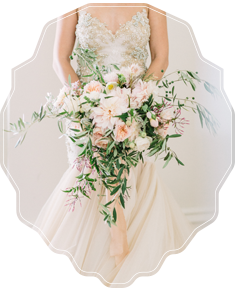When planning a wedding, there are so many details- large and small- that pop into your mind to plan. Everything from the venue, to the special people involved, to the vows, and even down to the smallest details like the color of your fiance’s bow tie (which I can guarantee you he won’t know how to tie, and will end up running late because of the three you tube videos he needs to watch in order to tie it…) But one major detail which so many couples don’t realize is a HUGE game changer for photo quality is the lighting conditions of your day, and how your timeline can effect your wedding photos.
Couples invest so much in their wedding photography, as after all it is the main tangible heirloom kept to remember and look back on the day, and that investment should really be used to its full potential in every way possible.
.jpg)
.jpg)
Don’t get me wrong- your wedding day is not about photography. Your wedding day is a celebration of you and your partner’s love and the love of your friends and family who got you to this point in your life, but if you have any room to play with the way your day is structured/timing is laid out, there are a few things that will make a world of difference in the quality of your photos.
Now, I’m not going to lie, I am going to be sharing a few photos to demonstrate some of the tougher lighting conditions. Normally, I don’t share these types of lighting conditions in my blog and portfolio because I try to curate to show work that is true to my photographic style, but weddings are days where I can’t control much and there are many parts in the day where my job is to document as it unfolds naturally (such as during the ceremony). During these times I don’t have control over where the couple is positioned or the angle of the sun and I must shoot them as they are. And these not-perfectly-lit moments are BEAUTIFUL and perfect in their own rite as ceremonies are about the emotions, moments, and beautiful joining of the couple and not about the hot spots or shadows. I truly love every wedding I am given the opportunity to be a part of, and mean to share these photos as a learning tool to understand the value and difference that taking lighting into account can have.
For all of my tips on planning your timeline, check out this previous post , but below are some very important things to keep in mind with regards to taking lighting conditions into account in your timeline:
**If you have a flexible timeline and portraits are important to you, PLAN YOUR TIMELINE AROUND “GOLDEN HOUR”**
First, one thing to keep in mind: Golden hour (the time of the warm/hazy/dreamy light just before sunset) may not always be relevant. If your wedding day is overcast/raining or if you are shooting in a forest/location with lots of trees or building obstruction, then this is irrelevant. Have reasonable expectations regarding your location and time of year and know that it is OK if you don’t get this type of light, but if you are in a location where it can be utilized- try to plan around it to utilize it!
.jpg)

Golden hour is the time I prefer to shoot my couple’s portraits. The warm, dreamy light is magical and adds such a romantic mood to the photos and it will always be my favorite. This light generally occurs about 1-1.5 hours before sunset and continues until the sun goes down. This will obviously be reflected in a different time depending on sunset time for the particular time of year. You will also want to take into account if you have a clear view of the horizon or if your light is obstructed by natural or made made elements.
If you are at a beach or wide open location with a clear unobstructed view of the sun, you’ll want to shoot with this light right as the sun is setting. If you are a little further inland, 1-1.5 hours before and leading up until when you lose light is when you will want to shoot. If you are in a forest or area which has an obstructed viewpoint, you’ll want to plan portraits for earlier- 2-3 hours before sunset would be my general standard by this can vary greatly.

Working backwards, start with planning your couple’s portrait time in this time frame. Then, work backwards and add in the rest of your timeline around this element. OR plan to sneak away from your reception for 15-20 minutes during dinner to take some additional portraits during this time.
** DO A SITE VISIT TO YOUR VENUE THE SAME MONTH YOUR WEDDING WILL BE- visit the same time of day you are planning and visit either the year before, or the month-of before you finalize your timeline**
Many couples plan their timeline, ceremony location, and other important elements around a site visit to the venue. Great. Unless you, like so amny couples, did your site visit in November and your wedding is in July. The position of the sun in the sky and sunset time will be very different, and you may be very disappointed when your ceremony location which was in full, shaded, even light during your site visit yields harsh, unflattering, bright light photos where everyone has racoon eyes and hot spots on their face.
Things to look for during this site visit will include the following:
1) What is the position of the sun during my ceremony and how is my ceremony space lit?
BACK LIGHTING – when the sun is lower and behind the subject (either directly behind or at a lower position in the sky and to the left or right behind them), will yield dreamy, hazier photos. The downside to keep in mind is that during a ceremony you will be entering from the opposite direction, which will mean harsh light during your entrance.



DIRECT SUN – when the sun hits your ceremony space directly, either overhead or at an angle. This is the least desirable condition for me. This can results in harsh light, bright highlights on white gowns, sweat, racoon eyes, etc.

DAPPLED LIGHT – when there is spotty sunlight shining through sparse tree cover. This is another challenging condition. This will result in hot spots and unusual patterns on the subjects.

PARTIAL SHADE – when half of the ceremony area is shaded and the other half is in full sun. Ok, I lied. THIS is the least desirable condition for me. Whereas full sun is an even lighting condition, so I can play with it a tiny bit while I edit the photos, partial shade causes half the subjects to be in two completely opposite lighting conditions, and the color temperature is orange in the sun and blue in the shade causing an imbalance. This one happens SO very frequently- often times because the alter was set up two feet off from the better lighting, or it was set up in shade hours before the ceremony, without the thought that the shade would be moving as the sun position changes. This one just kills me when it could have been fixed by moving the alter two feet backwards.


FULL SHADE – This is the easiest, most even lighting condition for a ceremony and will yield the most consistent results. We all know I LOVE my back lighting, and it looks amazing in ceremonies, but full shade is the way to go if you want consistent, predictable conditions.



Your venue has a choice of a back lit area OR a full shade area- what to choose?? Take into account if you are ok with gambling a back lit area. You will have either your entrance photos or your ceremony photos (depending on which way you seat your guests) in direct sun, so plan carefully and be prepared for the direct sun photos on the opposing side. Sometimes it is worth it to get those amazing back lit ceremony photos, and sometimes it makes much more send to use the safe, predictable, cooler full shade option!
2) What is the lighting conditions of my reception space?
Does the sun impact your reception space? Does your ballroom get harsh lighting through the windows at sundown? Does it matter to you if your tables are in harsh full sun? Take these things into account when planning where your head table will go and try to place the head table in the most evenly lit area of the space (full shade) or if outside in a back lit area so the sun sets behind you for dreamy lighting.

3)What time does the venue lost sunlight in the evening?
Does it lose sunlight early due to hills, trees, or building obstruction?

Is there an ideal spot on the property for a good view of sunset? If you are in a wooded area, you’ll want to plan to lose light very early and will need to plan your portrait time to occur earlier than natural sunset time. If you have a great view of sunset, you’ll want to plan some time to sneak away from the celebration and take a few golden hour photos.

Once again, your wedding day is not one giant photo shoot, but if you find that photography is important to you, these are some major game changers with what your photographer will be able to do for you. Wedding photographers work under so many different lighting conditions and no two weddings will ever yield the same results, but there are many ways you can set your wedding photographer up with optimal conditions in order to yield the best results within the conditions of the day to create some amazing memories.


.jpg)
.jpg)
.jpg)
